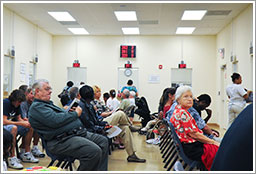Do you accept credit card payments?
If yes, any merchant or organization, regardless of size or number of transactions, that accepts, transmits or stores any cardholder data is required to be PCI (Payment Credit Card Industry) compliant. This includes any debit, credit, and prepaid cards branded with one of the 5 associated/brand logos that participant in PCI SSC—American Express, Discover, JCB, Mastercard, Visa International. Using a third party processor does not exclude a company from PCI compliance. Check your merchant services agreement which outlines your exposure.
Do you process payroll?
If yes, you are responsible for the safekeeping of this data even if outsourcing to a payroll data company.
Does your business utilize computers/software to run any part of operations?
If yes, what is the potential loss of income should the system be non-operational?
Do you offer any employee benefits to your employees? (health insurance/life insurance/ disability)?
If yes, you have Personally identifiable information on your employees, spouses and children that you are required to protect, whether in paper or electronic format.
Does your company offer a wellness plan?
If yes, according to the Office for Civil Rights (enforcement body for HIPAA), providing workplace wellness programs to employees requires employers to gather health data through health risk assessments and various other means and those data must be protected under HIPAA. The HIPAA Safety Rule requires that all covered entities to implement technical, administrative and physical safeguards to prevent protected health information from being viewed or accessed by unauthorized individuals. Fines of more than $50,000 can be assess for each violation up to $1.5 million per calendar year. Even companies that are not covered entities may be subject to HIPAA rules should PHI be breached.
Does your company allow employees to connect mobile storage devices to office computers?
If yes, malware and virus can infect your system via these devices. If you have a policy that prohibits these activities, are you certain that all your employees follow the policy all of the time?
Have you ever received an email that appears to come from a known party directing you to transfer money?
If yes, this is an example of a phishing scheme.
Do you allow access to your system to outside parties using a VPN?
If yes, open portals are gateways into your system and are being utilized by hackers.
Do you conduct business over the internet or through your website?
If yes, what impact would your business experience if it was no longer operational?
Do you provide for an EFT option to either accept payments from your vendors or to pay your vendors?
If yes, you have personally identifying information for either individuals or businesses – i.e. bank account information.
Do you require employment applications?
If yes, you have personally identifiable information. Where is this information kept? What do you do with applicant information for individuals that you do not ultimately employ?
Do you store, process, transmit any personally identifiable personal or health information for employees, customers, patients, students, companies, vendors, etc?
If yes, you have a legal obligation to protect that information.
Contact us for additional information, or download our cyber liablity e-book to learn more about properly protecting the business you've worked so hard to build.

 Every business has an exposure and risk of becoming a cyber crime victim. While most businesses are familiar with insuring for traditional risks, there are a range of exposures that your business may need to be protected from. The following questionnaire provides in depth insight into risks you may not have previously contemplated.
Every business has an exposure and risk of becoming a cyber crime victim. While most businesses are familiar with insuring for traditional risks, there are a range of exposures that your business may need to be protected from. The following questionnaire provides in depth insight into risks you may not have previously contemplated. Are you and your company prepared for the un-timely accident to one of your owners?
Are you and your company prepared for the un-timely accident to one of your owners?  With Memorial Day around the corner, you’re probably planning which local parades you’ll be attending. And we all know that when kids hear “parade” they also think…candy! We’ve participated in a few parades ourselves and know how important it is to keep the little ones happy.
With Memorial Day around the corner, you’re probably planning which local parades you’ll be attending. And we all know that when kids hear “parade” they also think…candy! We’ve participated in a few parades ourselves and know how important it is to keep the little ones happy. If you’re like most of the employees here at R&R, you’re obsessed with HGTV’s hit TV Show “Fixer Upper.” Chip and Joanna Gains give us major house envy with each episode, and we can’t help but see our own honey-do lists growing each week.
If you’re like most of the employees here at R&R, you’re obsessed with HGTV’s hit TV Show “Fixer Upper.” Chip and Joanna Gains give us major house envy with each episode, and we can’t help but see our own honey-do lists growing each week.  Most of us are familiar with the run-of-the-mill claims that typical home & auto insurance policies cover. You’re having a summer barbeque and the deck catches on fire. Covered. You’re teaching your teenage son to drive and he rear-ends the neighbor’s car. Covered.
Most of us are familiar with the run-of-the-mill claims that typical home & auto insurance policies cover. You’re having a summer barbeque and the deck catches on fire. Covered. You’re teaching your teenage son to drive and he rear-ends the neighbor’s car. Covered. Going to the DMV can often times feel like a chore. Whether you’re trying to squeeze it in during a lunch hour, or rush to beat the after work crowd, there’s never a good time to take care of pesky car business.
Going to the DMV can often times feel like a chore. Whether you’re trying to squeeze it in during a lunch hour, or rush to beat the after work crowd, there’s never a good time to take care of pesky car business. Since the beginning of the year there have been numerous reports of data breaches where criminals are gaining access to personal W-2, tax and payroll information by either hacking into on-line payroll systems or tricking employees into allowing access to this information.
Since the beginning of the year there have been numerous reports of data breaches where criminals are gaining access to personal W-2, tax and payroll information by either hacking into on-line payroll systems or tricking employees into allowing access to this information. Throughout the course of the year, an insured can accumulate quite a few certificates of insurance that are distributed to various entities. Depending on your business, these certificates could be issued based on complex contracts that provide the holders with coverage from your policy. When it is time for your policies to renew, it is important that you review the certificates that have been issued and determine whether they need to be renewed.
Throughout the course of the year, an insured can accumulate quite a few certificates of insurance that are distributed to various entities. Depending on your business, these certificates could be issued based on complex contracts that provide the holders with coverage from your policy. When it is time for your policies to renew, it is important that you review the certificates that have been issued and determine whether they need to be renewed. Wearable devices are becoming increasingly common in the workplace. While certain organizations have been using these tracking devices to promote healthy habits among their employers, the discussion surrounding identifying potential injuries and reducing the frequency of workers comp claims is growing.
Wearable devices are becoming increasingly common in the workplace. While certain organizations have been using these tracking devices to promote healthy habits among their employers, the discussion surrounding identifying potential injuries and reducing the frequency of workers comp claims is growing.